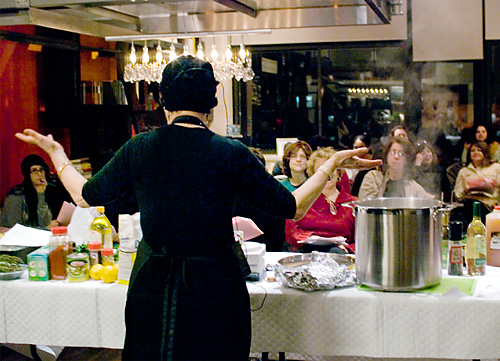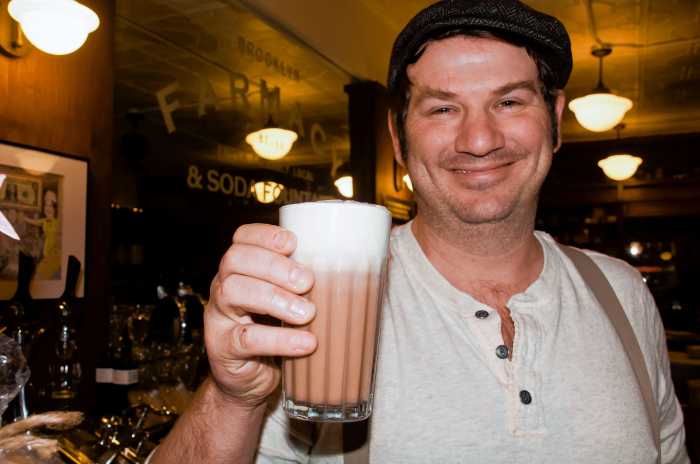My mother once said, “Passover food is all about not trying too hard.” Her caveat wasn’t about effort, though. It was about bravado. It was the response she offered when I suggested subbing braised short ribs for brisket, classic French quenelles for gefilte fish or crusting filets of mahi mahi with matzo meal and crushed sage. It was her way of suggesting that Passover is about honoring tradition, not about reinventing it.
“Not trying too hard” leaves room for the gelatinous texture and briny sting of gefilte fish, the robust nuances of braised meat and the dimension of a kugel as its crisp upper crust falls away to reveal its savory, mealy interior. There’s a time and place for experimentation, but for many, the Passover table, where first they lusted after a thimbleful of Manischewitz, is a place to return to the familiar flavors of their youth.
At my house, rolled into each matzo ball and seared into each brisket is a meandering family history, begun on the shores of the Black Sea and stretching from Queens and Brooklyn to New Jersey and Boca Raton. The recipes are ancient and thick with history; the aromas curling forth from the oven are unchanged, the flavors as evocative and nostalgic as any family album.
The relationship between food and family runs deep. “For so many people, food is a connection to Judaism,” said Chaya Kirschenbaum who last week led a Passover cooking class, part of a quarterly series of Women’s Inner Circle programming at 214 Underhill Ave. in Prospect Heights.
Taught by Levana Kirschenbaum — who is, of course, family — of the acclaimed Kosher Manhattan eatery, Levana’s, the class attracted a gaggle of women looking to take the edge off their harried hostess routine.
Chef Kirschenbaum’s advice for preparing a meal that doesn’t taste forced? “Try to make dishes that never had ‘chametz’ (breadstuffs that are forbidden during Passover) to begin with,” she said.
Her demonstration ranged from a simple artichoke soup and a salmon dish caked with a thick ambrosia of fresh herbs, to subtle elevations of holiday classics like her Sweet-and-Sour Brisket.
From macaroons to meringues, Passover desserts have plagued holiday hosts for generations. Chef Kirschenbaum’s flourless chocolate torte, which is made with ground nuts and high-end Callebaut chocolate (it’s kosher!), was dense and decadent, the perfect answer to the perennial Passover predicament.
Would-be chefs had different reasons for taking the couse. Cradling her 3-week-old son, Danielle Glanvill spoke of the importance of communicating religious identity through food.
“I gravitated towards Judaism later in life,” she said. “Identity is that important.”
Glanvill and her husband own L’Epicerie, a fine foods store at 270 Vanderbilt Ave. in Prospect Heights that sells prepared food including, yes, homemade brisket.
As the night wore on and Chef Kirschenbaum’s creations were pulled from the oven, the conversation turned to the central issue of the Seder: the matzo balls.
It is a question of faith: Should the orbs sink to the bottom of the soup or should they be “clouds,” buoyant masses that deconstruct in the broth? All agreed that seltzer made the balls fluffier, but few had made the connection that the more you handle your matzo balls, the heavier they will be.
It depends on one’s tradition — though even tradition changes. In recent years, my family’s pot has simmered with less matzo balls as carbohydrates were gradually aligned with narcotics and our waistlines shrank in tandem. Bottles of Manischewitz were replaced with comparatively decadent Riojas and plummy Bordeaux; square cakes of matzo were replaced with artisanal, handmade varieties, bubbling as if cooked in a tandoor.
And as my brothers and I grew and made the bittersweet migration from the “kids table” to the dining room, our tastes began to transcend the matzo pizzas of yore and came to appreciate the flavors of the holiday and the unrivaled brilliance of our mother, whose finesse made those early spring nights truly different from all others.

























